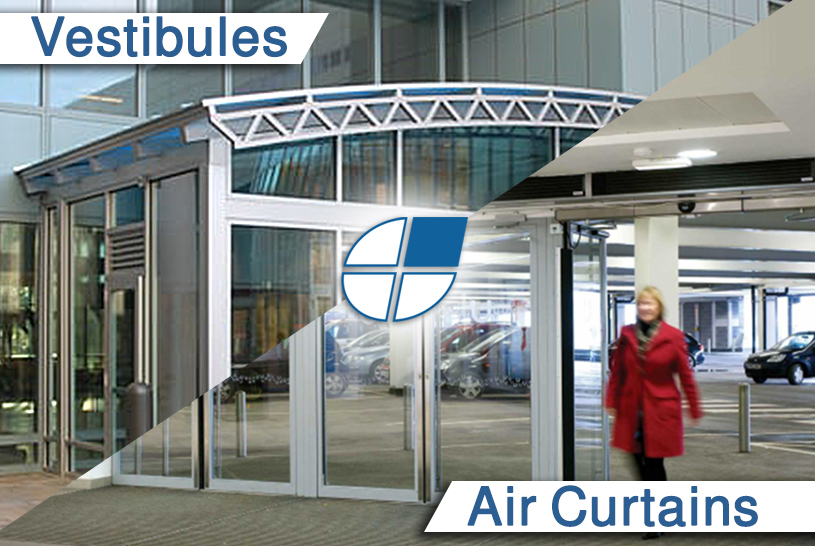Articles
Vestibules vs. Air Curtains
Air Curtains have been approved as an alternative to vestibules in most commercial buildings at their entrances as per the ASHRAE standard 90.1-2019, under the Energy Standard for Buildings Except Low Rise Residential Buildings. As per the approval, the air curtain installed must provide a minimum of 400-ft/min. airstream velocity at the floor.

The recognition of Air Curtains as an effective energy conservation device is excellent news for retail stores, healthcare facilities, hotels, commercial high-rise buildings, etc. Owners now have an option to eliminate vestibules in a new design or existing construction. The cost of an air curtain is significantly lower compared to the cost of constructing a vestibule. Air curtains also make an exit/entrance to buildings safer by not adding additional obstacles, such as extra doors. Because of the “open door effect,” there will be an increase in customer traffic where eliminating an extra door is an invitation to explore.
Apart from adding usable space in buildings, air curtains are proven to be very effective in energy savings and keeping building entrances climate protected, comfortable, and free of draughts, insects, fumes, odors, etc. The greatest advantage is that there is no ductwork required to install an air curtain. Eliminating the extra door also offers easy access for disabled people or customers that carry items, have a baby stroller, umbrellas, etc.
Basically, air transfer through doorways happens due to the following 3 factors:
- Temperature difference: the natural convection effect creates an air transfer between two areas with a temperature difference. Without an air curtain in place, warm air will escape through the top of the doorway while being replaced by cold air coming in at the bottom of the doorway. The larger the temperature difference, the greater the air infiltration and the greater the energy loss.
- Pressure difference: it is recommended that pressure differences be equalized as much as possible between the inside and outside environments to maximize air curtain performance and effectiveness. Exceptions might be clean rooms or clean zones where a slight positive indoor pressure will help minimize the ingress of unwanted contaminated air.
- Wind, stack effect, and draughts: by modifying the air jet strength and the outlet discharge angle, the air curtain can work against forced-air movements like wind or draughts.
Air curtains have been installed in buildings for over 60 years. The energy savings that air curtains provide have been thoroughly documented in extensive research, including studies conducted by Concordia University. Please contact us directly for more information.
--------
Airtecnics North America / Rosenberg Fans Canada Ltd.
1210 Mid-Way Blvd., Unit 20
Mississauga, ON
Canada
Tel: +1 (905) 565-1038
Email: info@rosenbergcanada.com
https://rosenbergcanada.com
https://airtecnicsnorthamerica.com

